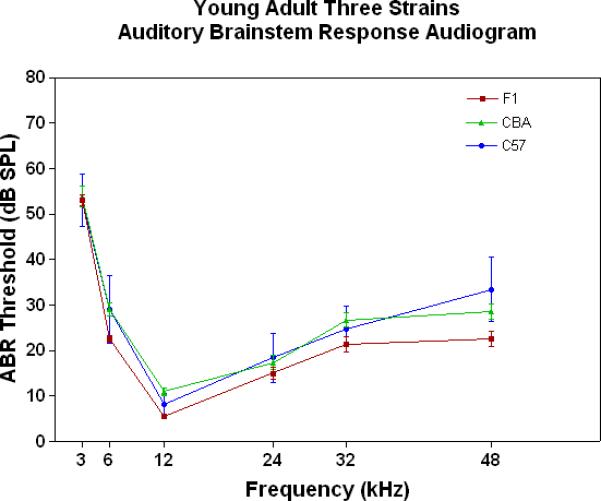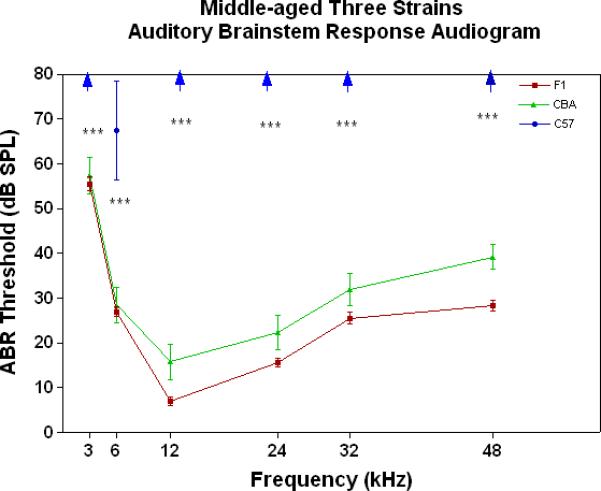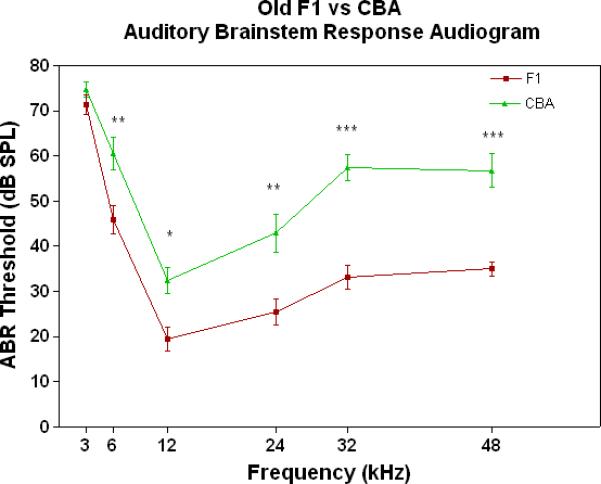Figure 3.



The F1 maintains noteworthy peripheral sensitivity into old age, whereas the C57 is well on its way to deafness by middle age. The CBA has relatively good hearing, but the ABR thresholds are not as sensitive as the F1, particularly in old age. A) All three strains have good hearing as young adults, although the CBA and C57 tend to be a little less sensitive than the F1 (ANOVA for the strain main effect: F=3.92, df=2, p=0.021). B) In middle age, the F1 and CBA have relatively good ABR thresholds, although the F1 tends to be more sensitive at middle and high frequencies. The C57 has thresholds above 80 dB SPL, except at 6 kHz. The strain main effect was statistically significant: F=544.2, df=2, p<0.0001. For the post-hoc Bonferroni pairwise comparisons, the C57 thresholds were significantly above the others: ***p<0.001. C) In old age, the F1 and CBA have moderate hearing losses, but the F1 is more sensitive at all frequencies, except 3 kHz. The age main effect was statistically significant: F=149.2, df=2, p<0.0001. For the post-hoc Bonferroni pairwise comparisons: *p<0.05; ***p<0.001.
